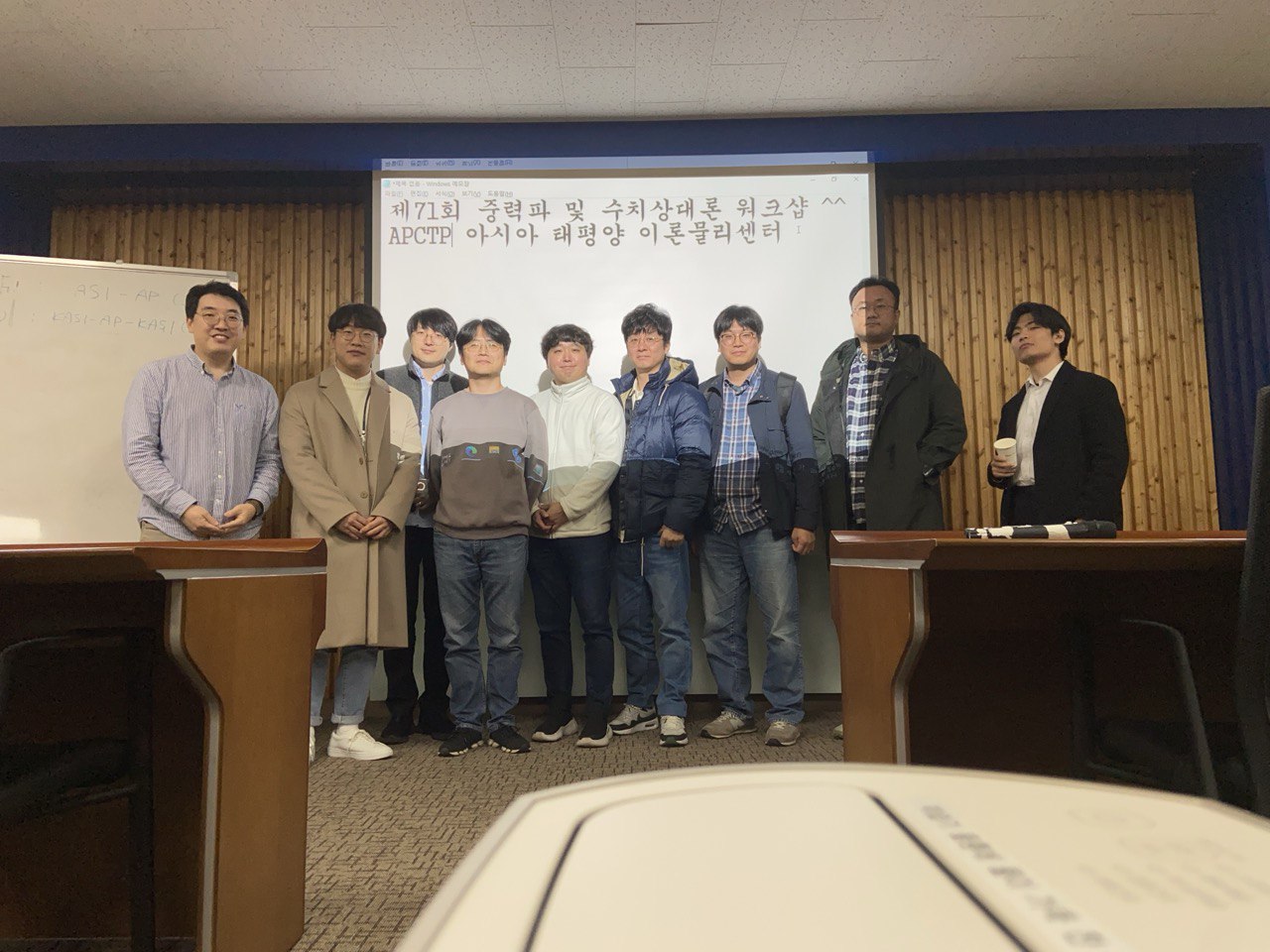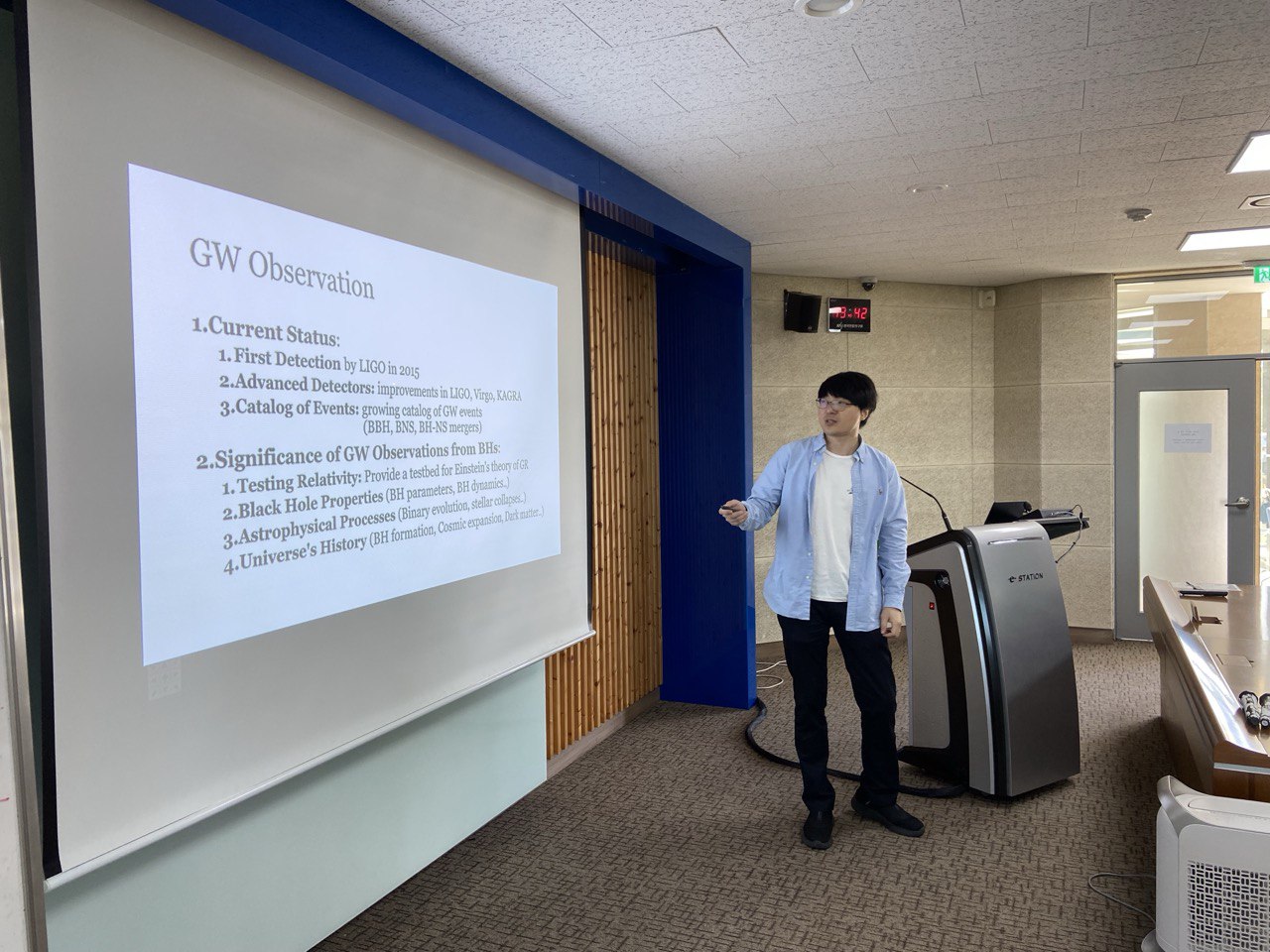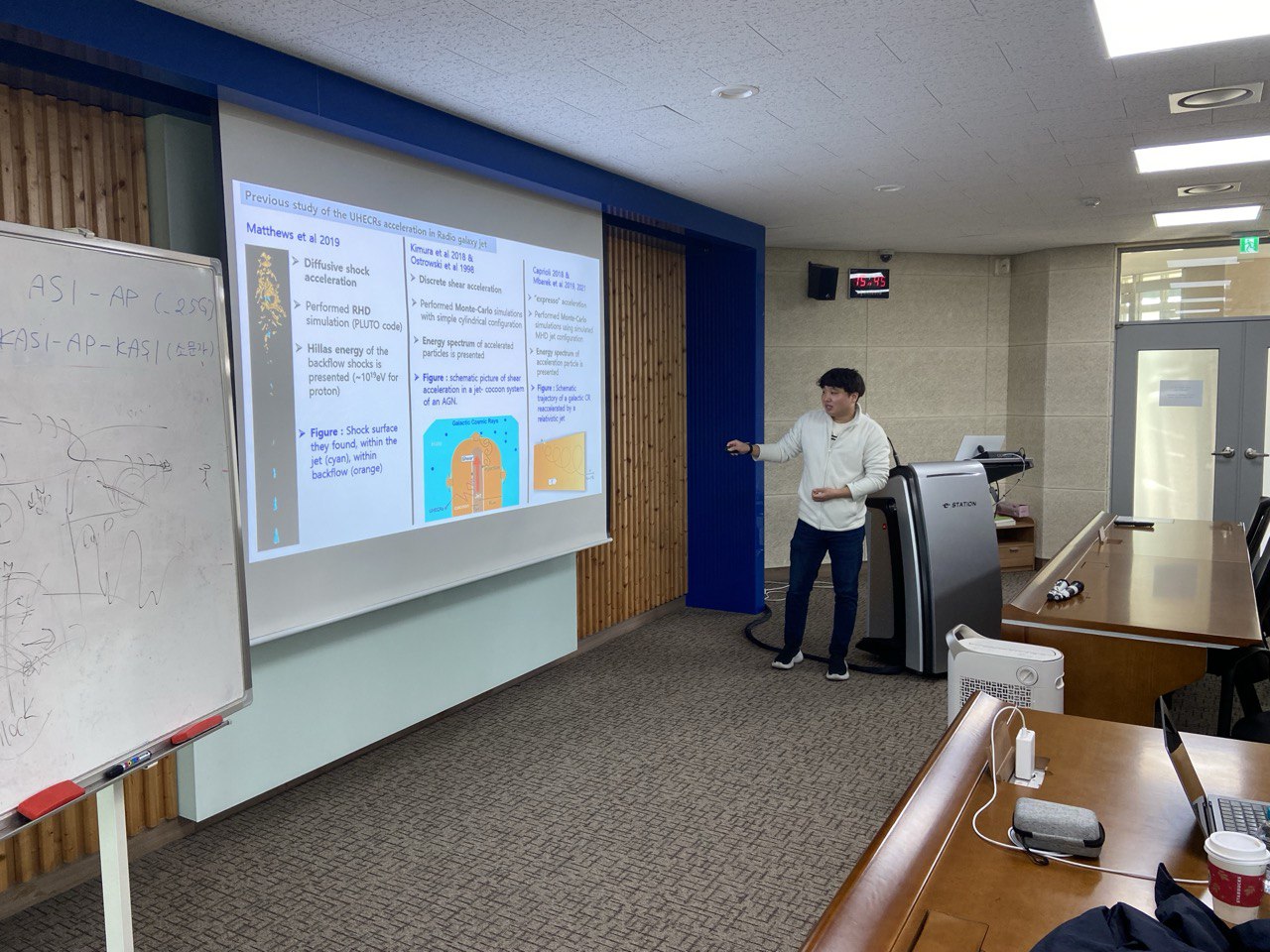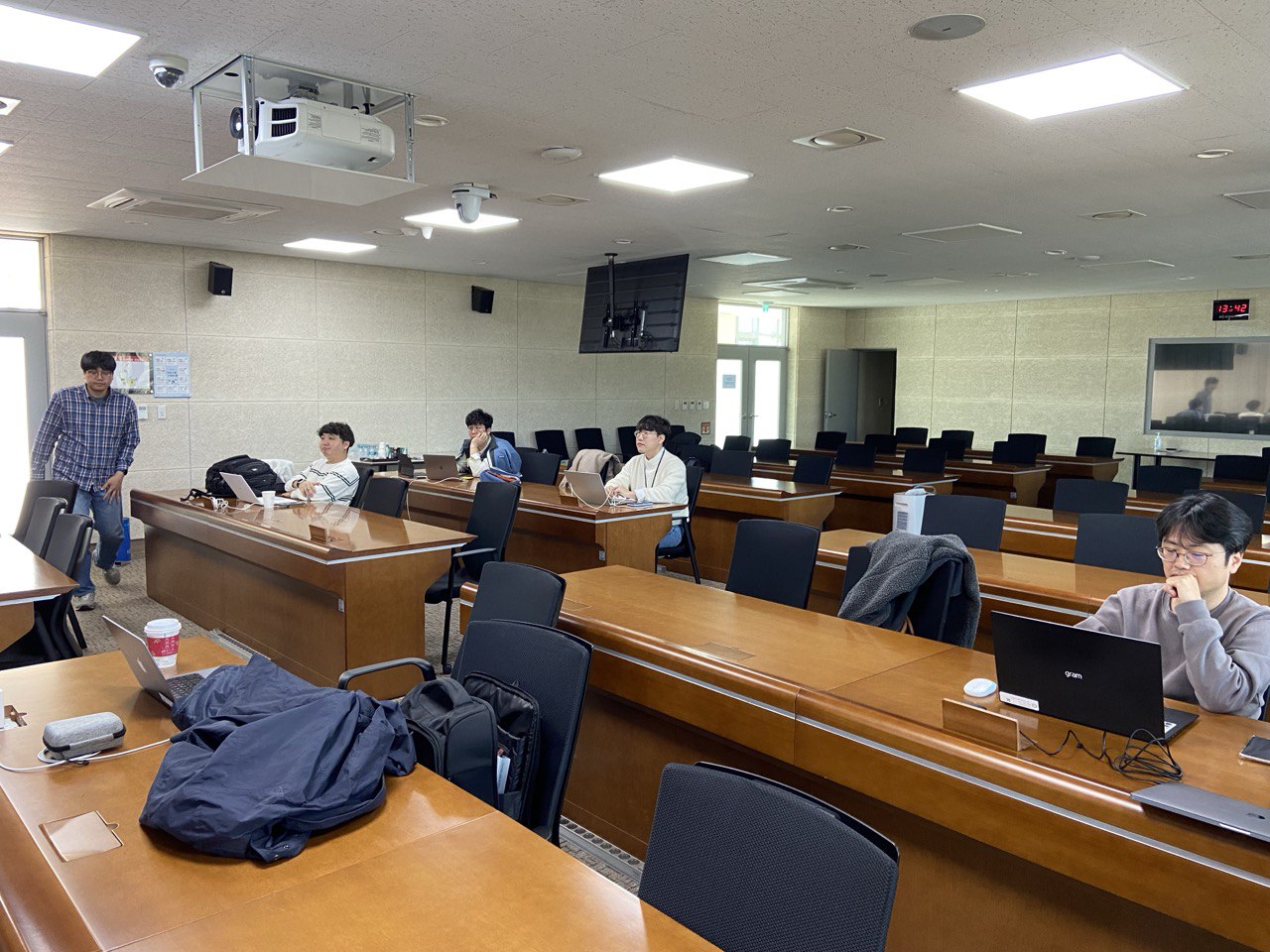Information
- Date: Nov. 8 (Wed.), 2023
- Venue: Rm #102 Lee Won Chul Hall, KASI
- Audience: Researchers and students in astrophysics
- Number of participants: 15 Offline
- Format: Long and intensive sessions from basic lecture to the latest research with a comfortable atmosphere to ask questions and discuss freely
- Sponsor: APCTP
- Contact
- Chan Park (iamparkchan at gmail dot com)
- Jinho Kim (jkim at kasi dot re dot kr)
Program
Sessions
- Ringdown gravitational waves from close scattering of two black holes
- Speaker: Young-Hwan Hyun (KASI)
- Time: Nov. 8 (Wed.) 13:30 - 15:30
- Speaking Language: English
- Slide Language: English
- Abstract: We have numerically investigated close scattering processes of two black holes (BHs). Our careful analysis shows for the first time a non-merging ringdown gravitational wave induced by dynamical tidal deformations of individual BHs during their close encounter. The ringdown wave frequencies turn out to agree well with the quasi-normal ones of a single BH in perturbation theory, despite its distinctive physical context from the merging case. Our study shows a new type of gravitational waveform and opens up a new exploration of strong gravitational interactions using BH encounters.
- Slide File: Hyun
- Radio Galaxies as the Origin of Ultra-High-Energy Cosmic Rays
- Speaker: Jeongbhin Seo (UNIST)
- Time: Nov. 8 (Wed.) 15:30 - 17:30
- Speaking Language: Korean
- Slide Language: English
- Abstract: Relativistic jet from radio galaxies is the most promising candidates for ultra-high energy cosmic ray (UHECR) generators. Through an approach involving relativistic hydrodynamic simulations of radio galaxy jets and Monte Carlo simulations of cosmic ray particle transport and acceleration, we have demonstrated the plausibility of radio galaxies being the origin of UHECRs. We found that the strong shear produced at the jet-backflow boundary significantly accelerates UHECRs. Through acceleration in the radio galaxy jet, the energy spectrum can be described by a double-power law, with the extended exponential cutoff influenced by the shear acceleration and confinement of elongated cocoons. In this study, we investigated the contributions of nearby or cosmologically distributed radio galaxies by cosmic ray propagation simulation. In this presentation, we present from simulation details to our recent results from the UHECR propagation simulation to address the discrepancies in flux and mass composition between the TA and Auger observatories.
- Slide File: Seo
Supports
- Meals
- Dinner on Nov. 8
Registration
- Link: Registration
- Due: Nov. 7 (Tue.)
Photos



